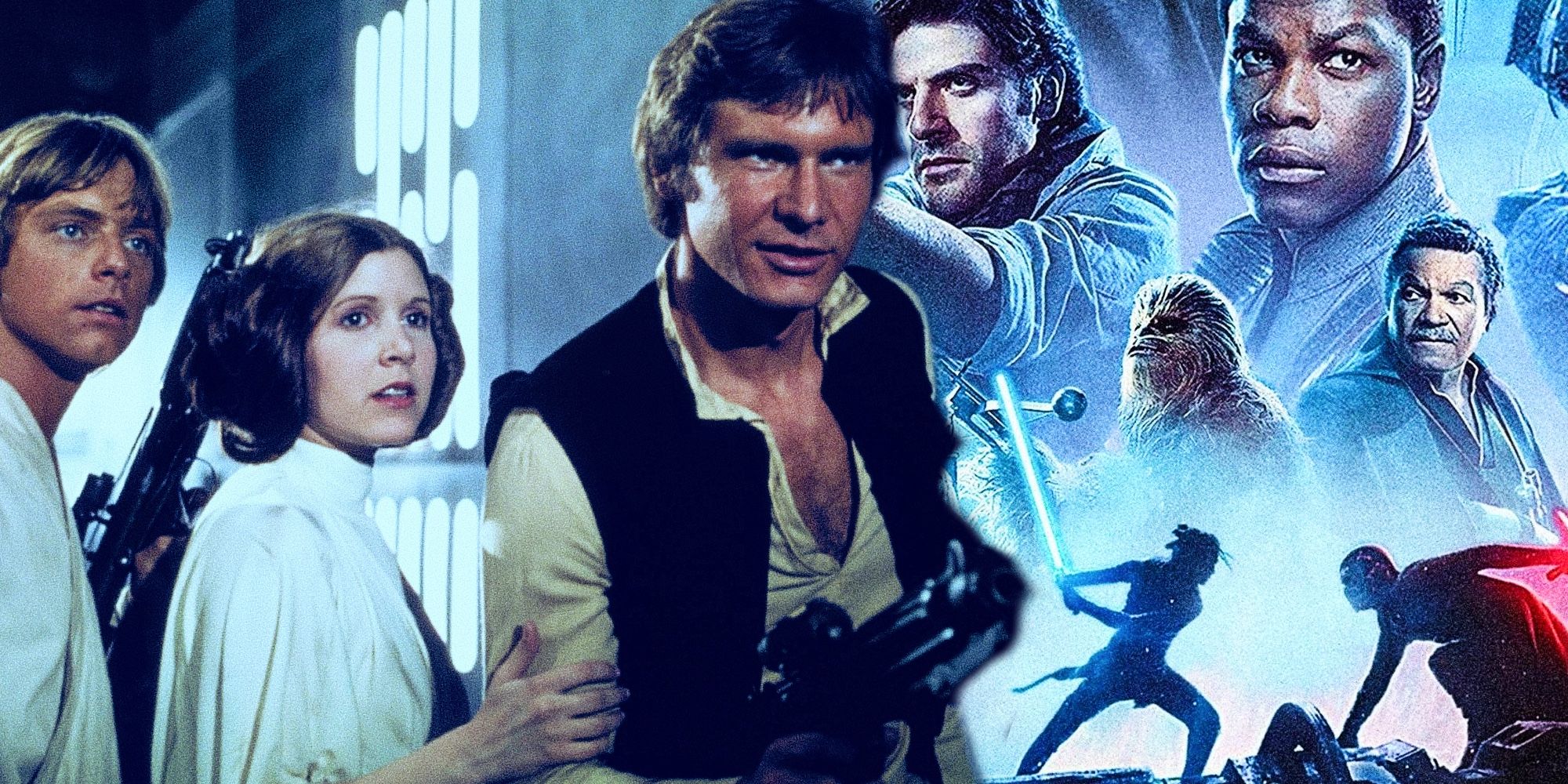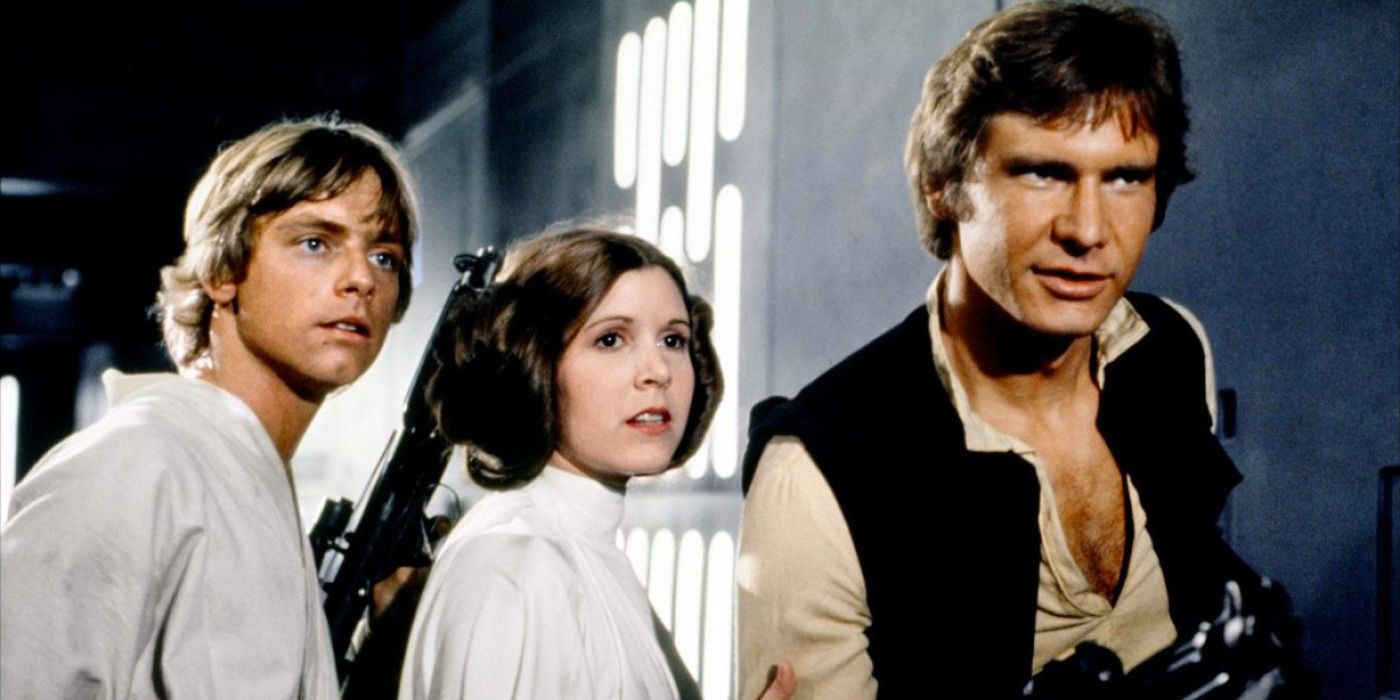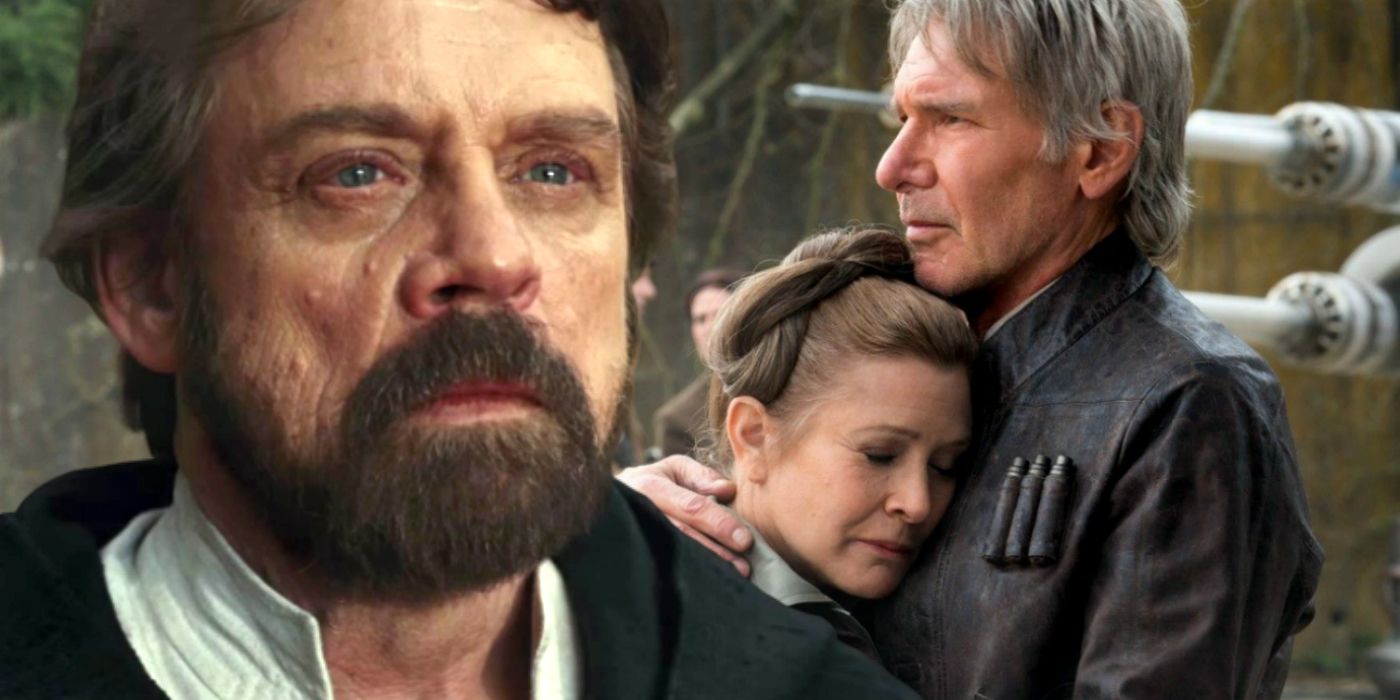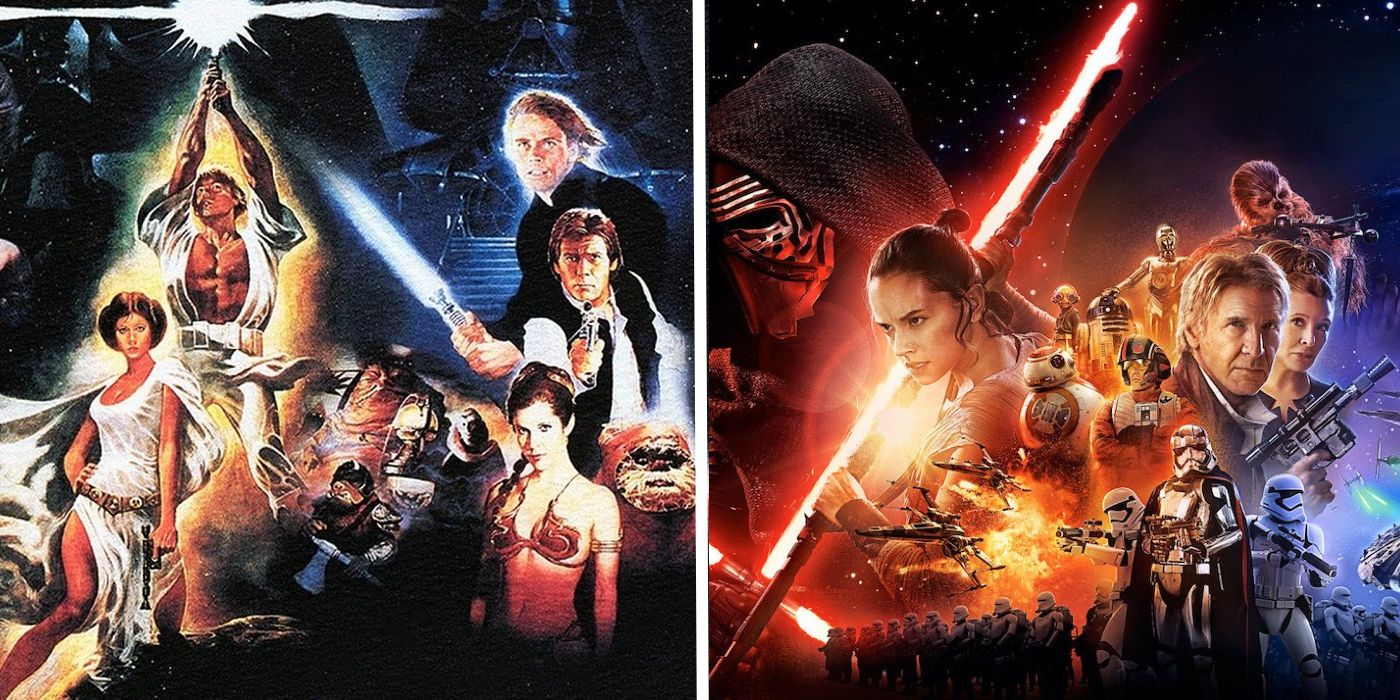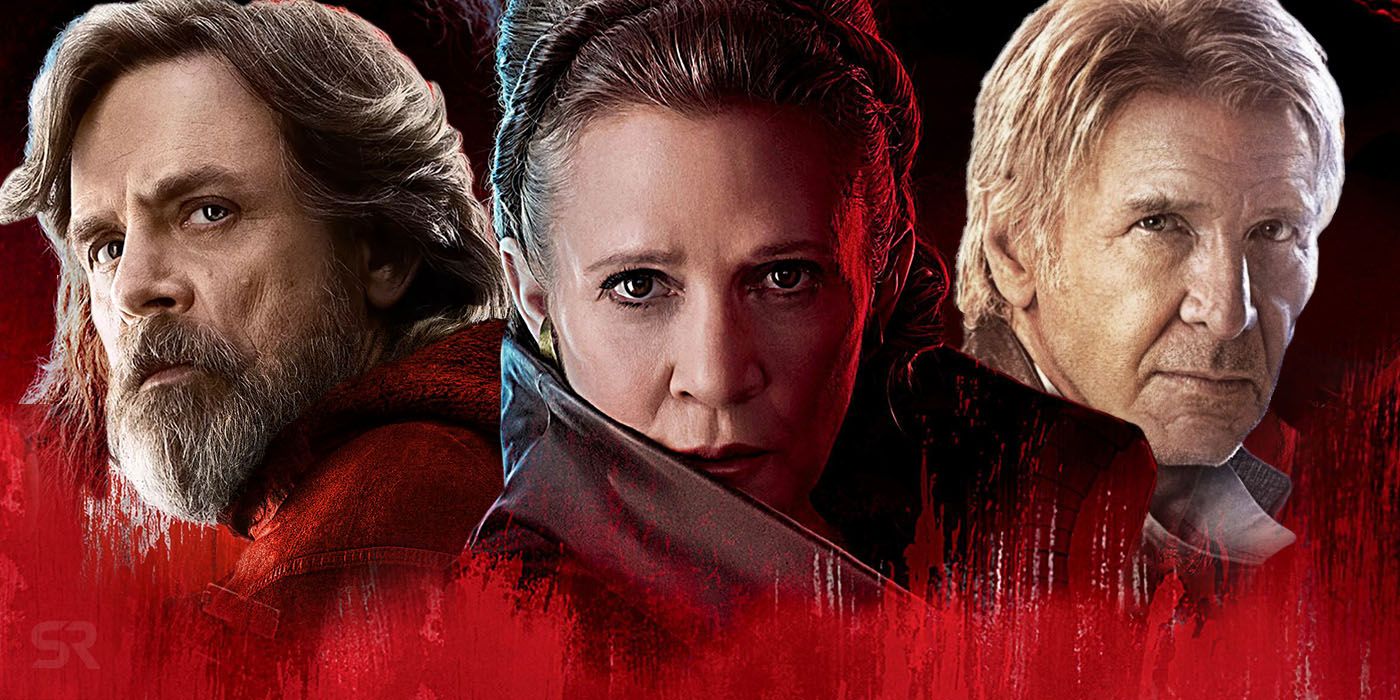The biggest way that the Star Wars sequel trilogy failed was how it wasted the chemistry of its returning characters. The Star Wars franchise is by far one of the biggest and most beloved of all time, becoming a pop-culture staple since its first installment was released in 1977. However, the franchise's record of disappointing its fans is also well-established. First, George Lucas's prequels went wholly unappreciated until their eventual reconsideration in contemporary culture, before Disney's sequel trilogy missed the mark and proved generally disappointing.
The Star Wars sequel trilogy was criticized for several reasons. Star Wars: The Force Awakens failed to start the trilogy off with any genuine originality, and the change of directors for Star Wars: The Last Jedi led to a general lack of any narrative consistency. Finally, Star Wars: The Rise of Skywalker proved to be an unsatisfying ending to the trilogy, with countless criticisms leveled at the final entry into the Skywalker Saga, the largest of which was arguably J.J. Abrams' and company's decision to reveal that Palpatine (Ian McDiarmid) had "somehow" returned and recycle an old Star Wars villain.
However, many of these myriad criticisms can be boiled down to that the sequel trilogy failed to live up to the high expectations set by the Star Wars franchise. Nowhere is this particular point more evident than in the handling of the beloved original trilogy characters Han Solo (Harrison Ford), Luke Skywalker (Mark Hamill), and Leia Organa (Carrie Fisher), with each dying one by one throughout the sequel trilogy. By failing to give Han Solo, Leia Organa, or Luke Skywalker a meaningful ending, the sequel trilogy failed its characters, but the films doubled down on this issue by also failing to properly use them while they were alive. The fact, in the beginning, that all three heroes were alive and well but kept almost entirely separate from one another was the sequel trilogy's biggest failure, as it wasted the potential to capitalize on their shared chemistry which made the original Star Wars trilogy so popular.
Han, Luke, And Leia's Chemistry Made The Original Trilogy Great
Star Wars: Episode IV - A New Hope and its two initial sequels are considered irrefutable classics of the sci-fi genre in contemporary culture, and one of the most lasting aspects of the original trilogy is the playful chemistry between its three heroes. Thrown together seemingly by chance, Star Wars' Luke, Han, and Leia quickly establish a close bond which serves as the driving force behind the original trilogy's story. This is best exemplified when Han is frozen in carbonite, with both Leia and Luke attempting to rescue him despite seemingly insurmountable odds inside Jabba's Palace - highlighting the deep bond the trio share.
It's not just within Star Wars' story that the three characters share chemistry, though. Mark Hamill, Carrie Fisher, and Harrison Ford became close themselves in real-life, and their group dynamic is captured perfectly within the films. The original Star Wars trilogy offers ample moments of comic relief and dramatic developments, and the one vein that runs through all of it is how convincingly the core trio were able to translate their chemistry to the screen.
The Star Wars Sequels Kept The Original Cast Separate
One of the Star Wars sequels' most obvious failings was keeping Han, Luke, and Leia apart. The Star Wars sequels' legacy character mistake was all the more noticeable on the heels of their brilliant chemistry in the original trilogy, and it also made very little sense from a narrative perspective. In fact, the films barely address the reasons for keeping their original heroes seperate, and while there are real-world implications that perhaps explain the decision, there's no convincing, plausible reason to have kept the three characters separate in the sequel trilogy other than their deaths keeping them from reuniting.
Leia meets with Han briefly in Star Wars: The Force Awakens before his death and with Luke's Force projection shortly before he passes into the Force, but Han and Luke were not given an on-screen reunion. Throughout the sequels, Luke only ever physically interacted with Rey and briefly with Leia as a Force Ghost. Though keeping Luke as a hermit was a key part of the sequels' version of the character, it was a poor way to use some of the franchise's most beloved characters given their natural rapport and aforementioned bond.
Star Wars' Sequel Trilogy Needed Better Links To The Original Movies
One common criticism of the Star Wars sequels is their failure to satisfyingly continue and conclude the events of the original movies. After Disney retconned decades of established canon, it was believed that this would make it simpler for their sequel trilogy's story to follow the continued journeys of Han, Luke, and Leia, but in fact, it did the opposite. The very nature of the sequels' story proved unsatisfying to those with an attachment to the no-longer-canon Star Wars Legends, but the lack of genuine links to the original trilogy was what more distinctly undermined the Star Wars sequels' story.
In particular, Star Wars: The Force Awakens simply reused the original Star Wars narrative line, but without the characters that made it great. Luke and Leia made only minor appearances in the first sequel film, and Han's death made The Force Awakens his last Star Wars outing. The two subsequent films did nothing to fix this issue, and outside of transparent and unintelligent fan service, the sequel trilogy offered very little narrative connection to the original trilogy. In fact, the Star Wars sequel trilogy felt so disconnected from both the original trilogy and the prequels (which did an excellent job of connecting with one another organically) that it failed to gain traction with the majority of long-time Star Wars fans, particularly in The Last Jedi and The Rise of Skywalker.
Why The Sequels Wasted Its Original Trilogy Characters
In line with the sequel trilogy's story, Luke, Han, and Leia had to die to make Kylo Ren's redemption feel earned. However, this was seemingly a plot point established from the very start from the sequel trilogy's plans, and ultimately further proves the fundamental mishandling of these iconic characters. In this way, the rush to kill off Star Wars' three most iconic heroes was a cheap way to continue the Skywalker Saga, and it's something that, given the disconnected nature of the sequels, felt entirely un-earned.
Had the Star Wars sequels used Han, Luke, and Leia as genuine heroes instead of simple legacy characters, things might have been different. Wasting the three of them was one of the sequel trilogy's biggest mistakes, and the fix was actually relatively simple. Had the trilogy simply made proper use of the chemistry shared by Luke, Han, and Leia in the original Star Wars trilogy, the sequels would have felt a far more natural part of the franchise and avoided their biggest failure in the process.

